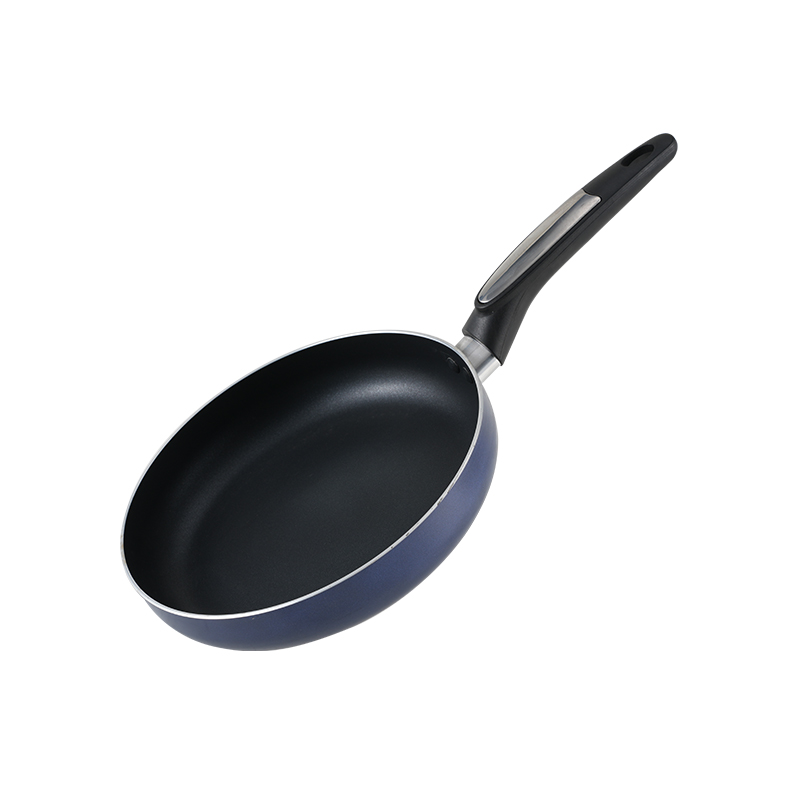The Science Behind Anodized Nonstick Cookware and Its Safety
May 15, 2025
Anodized Nonstick Cookware has become a staple in many kitchens, offering a combination of durability, ease of use, and health benefits that make it an appealing choice for home cooks and professionals alike.
The Process of Anodization:
Anodized Nonstick Cookware is made by anodizing the aluminum surface. Anodization is an electrochemical process that converts the aluminum's surface into a hard, durable, and corrosion-resistant layer of aluminum oxide. This process not only enhances the cookware's longevity but also provides a smooth, nonporous surface that is ideal for applying nonstick coatings.
Advantages of Anodized Surfaces:
High Quality Non Stick Cookware made from anodized aluminum offers several advantages over other types of cookware. Firstly, the anodized surface is highly resistant to scratches and abrasions, which means that the nonstick coating lasts longer. This extended lifespan reduces the need to replace cookware frequently, saving both money and resources.
Secondly, anodized cookware is known for its outstanding heat distribution properties. This ensures that food cooks evenly, reducing the risk of hot spots that can cause food to burn. The even heat distribution also makes anodized cookware energy-efficient, as it requires less heat to achieve the desired cooking temperature.

Health and Safety:
When it comes to Healthy Nonstick Cookware, concerns often arise about the safety of nonstick coatings. However, modern anodized nonstick cookware is designed with safety in mind. The anodization process creates a barrier between the aluminum and the nonstick coating, reducing the risk of aluminum leaching into food.
Moreover, the nonstick coatings used in High Quality Non Stick Cookware are typically made from materials like polytetrafluoroethylene (PTFE), which is stable at high temperatures and does not produce harmful fumes or chemicals when used correctly. It's important to note that these coatings should not be used with metal utensils, as this can damage the nonstick surface and potentially release small particles.
Temperature Guidelines and Proper Care:
To maintain the safety and longevity of your anodized nonstick cookware, it's crucial to adhere to the manufacturer's temperature guidelines. Most anodized nonstick cookware is safe for use in ovens and under broilers, but it's good to avoid exposing it to open flames or extremely high temperatures that could degrade the nonstick coating.
Proper care also plays a significant role in the safety of anodized nonstick cookware. Cleaning should be done gently, using soft sponges and nonabrasive cleaners to avoid scratching the surface. Additionally, storing cookware with care, such as not stacking heavy items on top, can help preserve the integrity of the nonstick surface.
Environmental Considerations:
Anodized Nonstick Cookware is not only a health-conscious choice but also an environmentally friendly one. The anodization process is energy-efficient and results in a product that lasts longer, reducing waste. High Quality Non Stick Cookware made from anodized aluminum is also recyclable, contributing to a circular economy and reducing the demand for new raw materials.
Anodized Nonstick Cookware stands out as a High Quality Non Stick Cookware option that offers numerous benefits, from durability and even heat distribution to health and safety. By understanding the science behind anodization and following proper care guidelines, consumers can enjoy the many advantages of this type of cookware, contributing to a healthier and more sustainable lifestyle. As the demand for Healthy Nonstick Cookware continues to grow, anodized nonstick cookware remains a top choice for those seeking performance, safety, and environmental responsibility in their kitchen tools.
 English
English русский
русский Français
Français Español
Español Português
Português عربى
عربى














